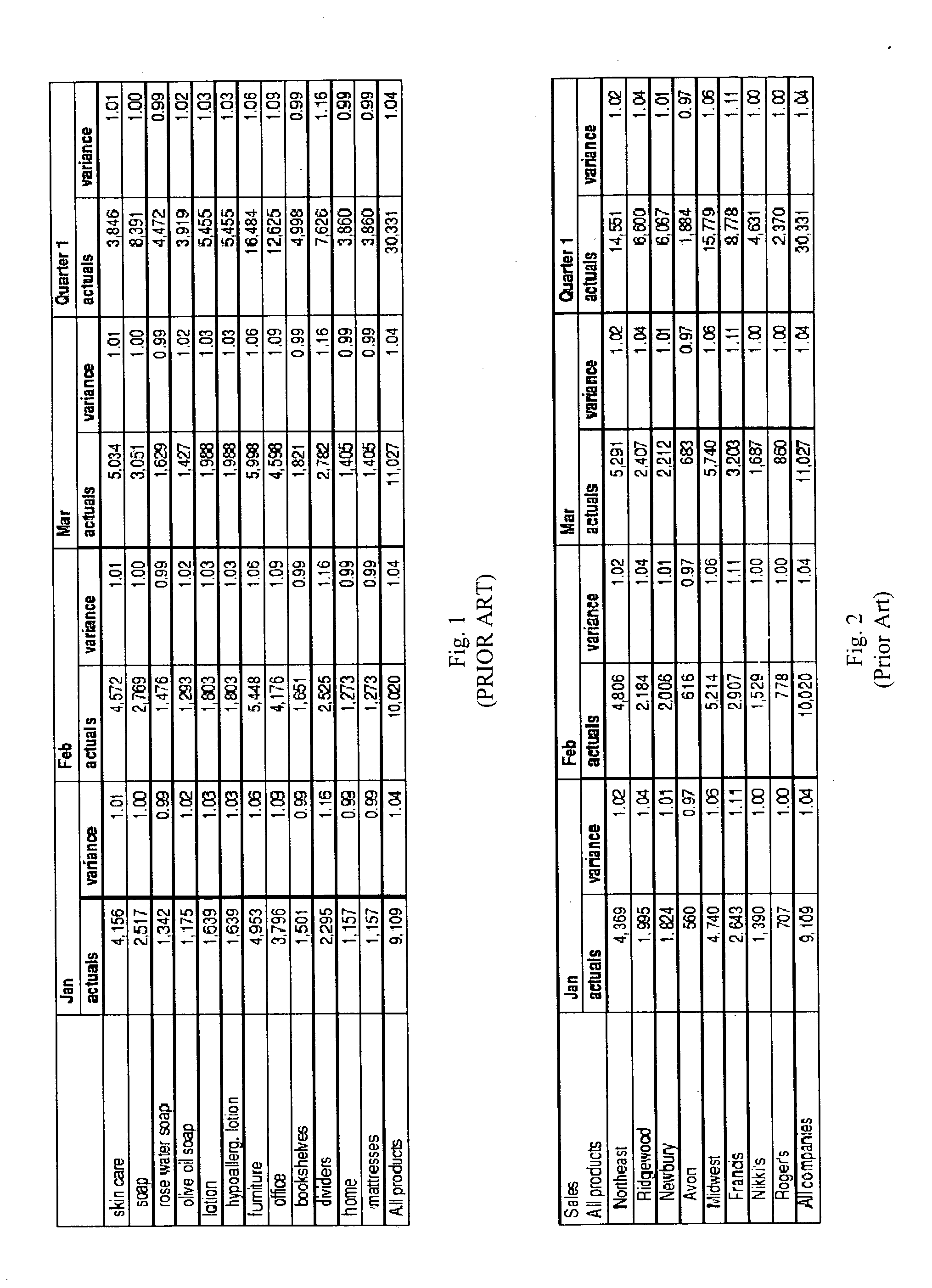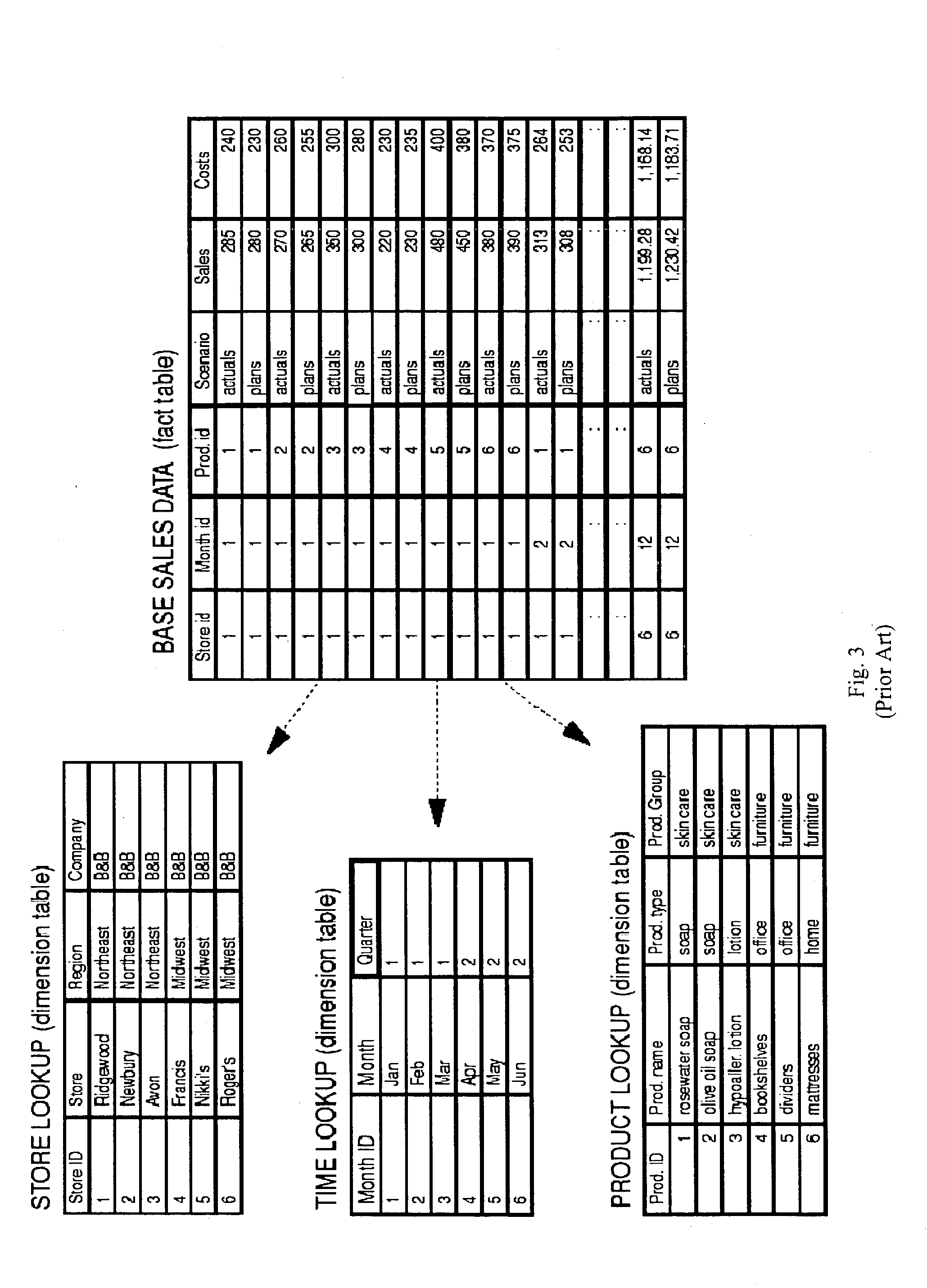Computer systems and methods for the query and visualization of multidimensional databases
a database and computer system technology, applied in the field of interactive visual exploration tools, can solve the problems of unfavorable interactive calculations that require visiting each record, inability of analysts to reason about or view the entire data set at its finest level of detail, and the shear size of these data sets complicates the task of exploratory analysis, so as to facilitate exploratory analysis of databases
- Summary
- Abstract
- Description
- Claims
- Application Information
AI Technical Summary
Benefits of technology
Problems solved by technology
Method used
Image
Examples
Embodiment Construction
[0078] The present invention provides a method for exploiting the hierarchical information present in databases in order to facilitate exploration of such databases. The present invention uses a novel formulism to accomplish this task. A user is allowed to enter a search query that is consistent with the novel formalism of the present invention. When such a search query is constructed, the systems and methods of the present invention take advantage of the formalism and the hierarchical information associated with the target database to service the query using fewer existence scans and other time consuming database functions than are found in known data exploration programs and techniques. Additional features and advantages of the present invention are disclosed in the following sections.
5.1 Overview of an Exemplary System
[0079] FIG. 5 shows a system 500 that facilitates exploratory analysis of databases, such as data warehouses, in accordance with one embodiment of the present inven...
PUM
 Login to View More
Login to View More Abstract
Description
Claims
Application Information
 Login to View More
Login to View More - R&D
- Intellectual Property
- Life Sciences
- Materials
- Tech Scout
- Unparalleled Data Quality
- Higher Quality Content
- 60% Fewer Hallucinations
Browse by: Latest US Patents, China's latest patents, Technical Efficacy Thesaurus, Application Domain, Technology Topic, Popular Technical Reports.
© 2025 PatSnap. All rights reserved.Legal|Privacy policy|Modern Slavery Act Transparency Statement|Sitemap|About US| Contact US: help@patsnap.com



